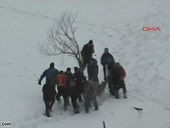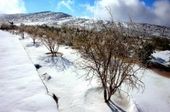
© DHARescue efforts are continuing at the Turkish resort of Zigana, where 10 people have died.
At least 10 mountaineers were killed Sunday in an avalanche at a ski resort in northeastern Turkey, authorities said.
Rescue workers pulled out at least seven people alive from under the snow at the resort in Zigana, Enver Salihoglu, the governor of Gumushane, told CNN-Turk.
At least two of the survivors were hospitalized, he said.
The city of Gumushane is about 30 km (18 miles) from the site of the avalanche.
Rescue efforts to find possibly more people trapped may be suspended due to hazardous conditions.

